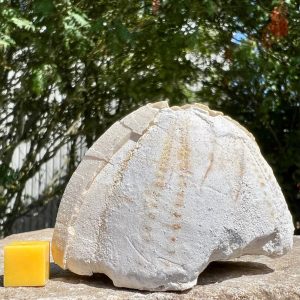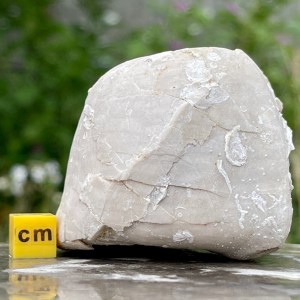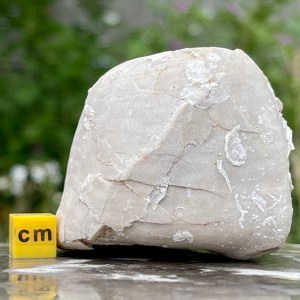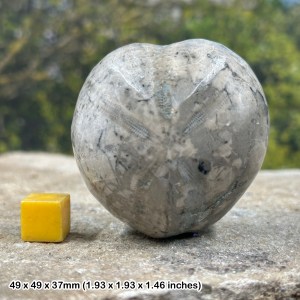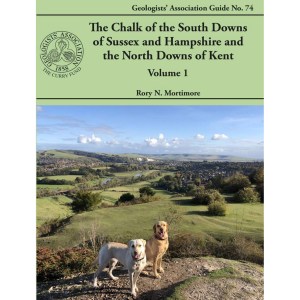At this site, fossils can be found in accumulations of flint. They can also be found in the chalk foreshore and in fallen boulders. They can also be seen in the cliffs. Finds are not particularly abundant, but you should go home with something.
DIRECTIONS
♦ Park at the north-eastern end of Victoria Road, just before the King George VI memorial park.
♦ There is a path down to the beach from the top of the cliff. Walk to the bottom and then left along the promenade to the end. Then go onto the beach.
♦ There is plenty of free parking at the top of the cliff and it is a fairly short walk down to the beach by means of a slope and some steps.
♦ Ref: 51.34902°N, 1.43967°E
PROFILE INFO
FIND FREQUENCY: ♦♦ – The chalk at Dumpton Gap is not especially fossiliferous. However, when the tide is out, there is plenty of chalk to look at on the foreshore, where the wave cut platform is exposed. There are also occasional cliff falls, which can yield specimens.
CHILDREN: ♦♦♦♦♦ – This is a beach location, frequented by families and dog walkers. Most of the beach is sandy, with areas of flint, and chalk exposed lower down. For these reasons, this location is very suitable for families with children.
ACCESS: ♦♦♦♦ – There is plenty of free parking at the top of the cliff and it is a fairly short walk down to the beach by means of a slope and some steps. Once on the beach, walking is easy in most areas.
TYPE: – Fossils can be found in the chalk of the foreshore and also within boulders. However, the cliffs should be avoided, as they are dangerous.
FOSSIL HUNTING
There are large accumulations of flint to look over for loose sea urchins. These are infrequent, but you can usually find some. The foreshore and any chalk boulders should also be investigated. It is often worth breaking open blocks that have evidence of broken echinoids (including Micraster, Sternotaxis and Cladoceramus) on their surfaces in case they contain better specimens inside.
Along with echinoids, there are brachiopods (Orbirhynchia and Gibbythyris), bivalves (Platyceramus), sponges, belemnites, corals and more, which can all be found on a good day.
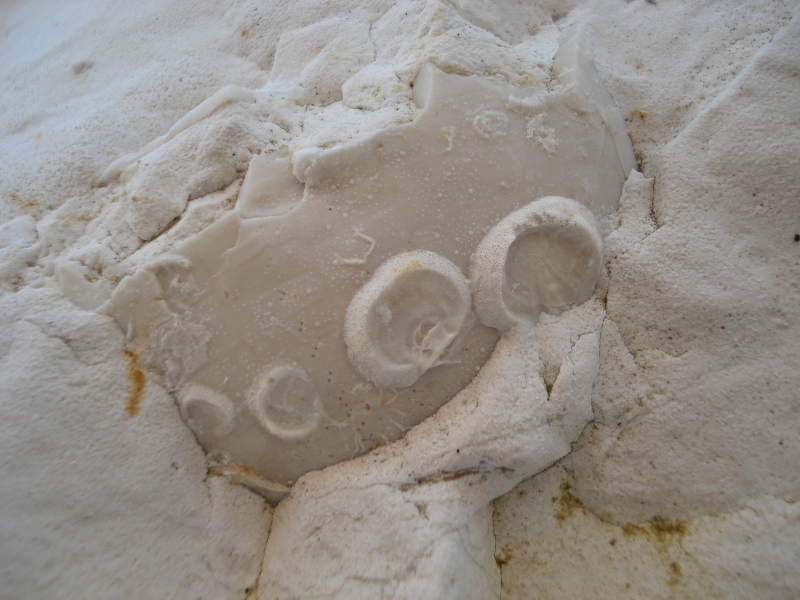
GEOLOGY
At Dumpton Gap, the Cretaceous White Chalk Subgroup of Santonian and Coniacian age is exposed. This is the Seaford Chalk Formation and includes the Haven Brow Beds (Santonian). There are several distinct bands within these, which can be seen in the excellent exposures at this site. These are the Whitaker’s Three Inch Flint Band, the Bedwell’s Columnar Flint Band, Rowe’s Echinoid Band and the Barrois’ Sponge Bed.
On the foreshore, a wave-cut platform with Paramoudra flints and the bivalve Cladoceramus undulatoplicatus can be seen in beds below the Bedwell’s Columnar Flint. Paramoudra flints are more
Common, however, in the Bedwell’s Columnarband in the coast section north of Dumpton Gap, and also occur in association with the underlying flint bands.
Sea walls have been constructed around much of the coast, at Dumpton Gap,reducing in particular the exposure of Margate Chalk Member in the Uintacrinus socialis, Marsupites testudinarius and Uintacrinus anglicus zones.
On the other hand, the building of the relatively new undersea walls has resulted in significantly less cliff erosion and has provided access to parts of the succession that were formerly difficult to study. For example, Bedwell’s Columnar Flint Band is now within reach along the top of the sea wall northwards from Dumpton Gap.

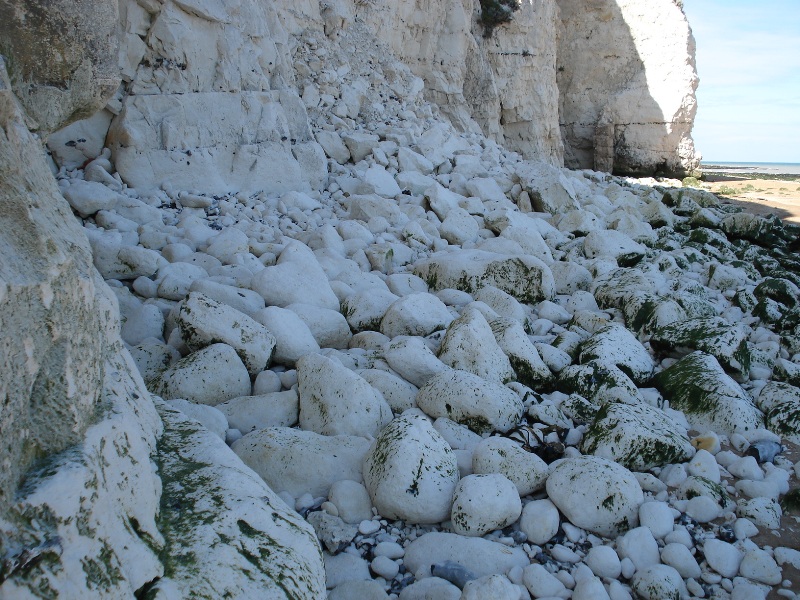
SAFETY
Common sense when collecting at all locations should always be used and you should check tide times before visiting. Keep a safe distance from the cliffs. In some places, weed on the foreshore makes it slippery. It is also possible to become cut off by the tide, so ensure you collect on a retreating tide. Make sure someone knows where you have gone and what time you expect to be back.
EQUIPMENT
A good, sturdy bag and plenty of packing material, as well as a hammer and chisel, are needed at this location. Waterproof boots with a good grip will also come in handy.
ACCESS RIGHTS
This site is a site of special scientific interest (SSSI). This means you can visit the site, but hammering the bedrock is not permitted. For full information about the reasons for the status of the site and restrictions, download the PDF from Natural England.
It is important to follow our ‘Code of Conduct’ when collecting fossils or visiting any site. Please also read our ‘Terms and Conditions‘
LINKS
♦ Buy Fossils, Crystals, Tools
♦ Location Discussions
♦ Deposits Magazine
♦ Join Fossil Hunts
♦ UK Fossils Network
-
British Echinoid Chalk Fossil, Echinocorys, UK, Genuine
£7.20 -
Echinocorys Echinoid Fossil Urchin – Genuine Specimen – UK Cretaceous CERTIFICATED
£7.20 -
Echinocorys sp. fossil – cretaceous period, united kingdom
£11.52 -
Echinocorys sp., Cretaceous, United Kingdom
£9.60 -
Micraster Heart Fossil Echinoid, Sea Urchin, Cretaceous, Genuine
£18.36 -
The Chalk of the South Downs of Sussex and Hampshire and the North Downs of Kent (Parts 1+2 set)
£38.00
























